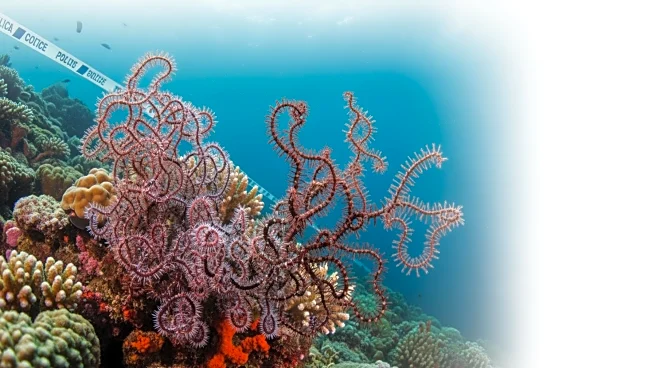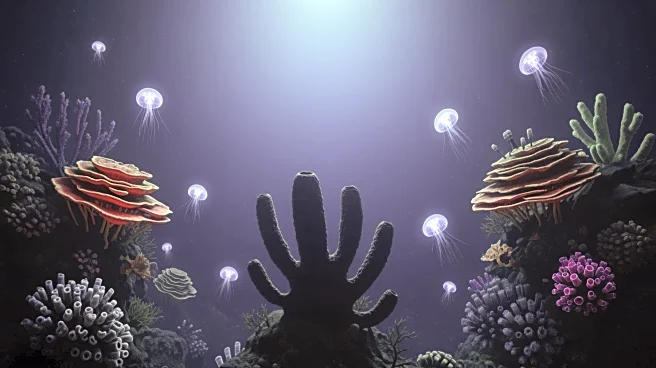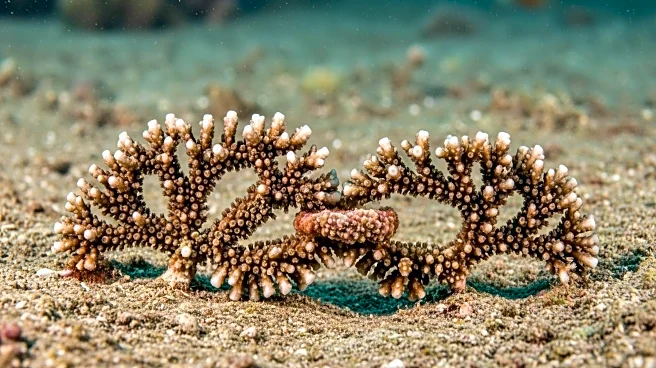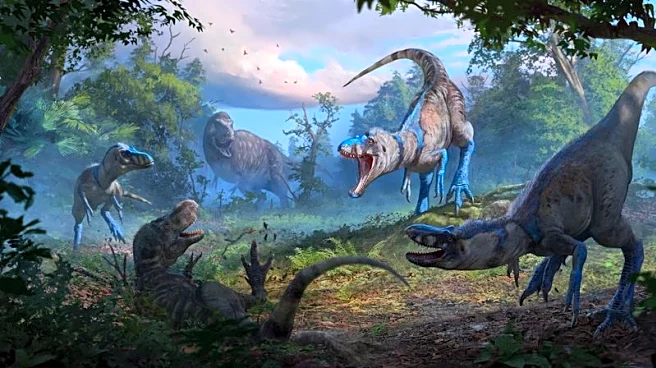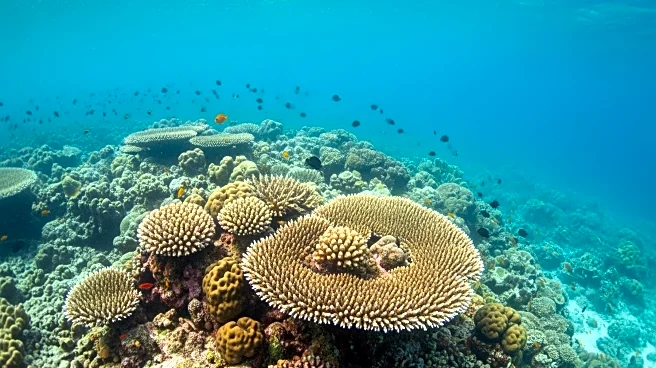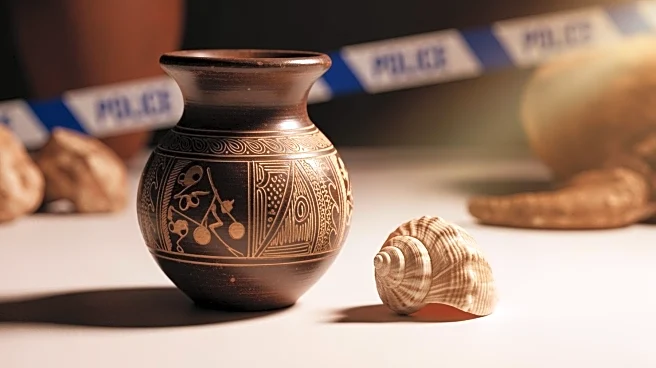What's Happening?
A groundbreaking study led by Museums Victoria Research Institute has unveiled the global connectivity of deep-sea marine life, particularly brittle stars. By analyzing DNA from 2,699 specimens collected
from various natural history museums worldwide, researchers discovered that these ancient marine invertebrates have migrated across entire oceans over millions of years. The study, published in Nature, maps the distribution and evolutionary relationships of brittle stars, revealing that these creatures have formed evolutionary 'superhighways' connecting distant regions such as Tasmania and Iceland. This research challenges the notion that marine species evolve in isolation, highlighting the interconnected nature of deep-sea ecosystems.
Why It's Important?
The findings of this study have significant implications for understanding marine biodiversity and conservation. The global connectivity of deep-sea species suggests that these ecosystems are more resilient and interconnected than previously thought. This knowledge is crucial for developing strategies to protect marine life, especially as threats from deep-sea mining and climate change increase. The study also underscores the importance of museum collections in providing valuable insights into the evolutionary history of marine organisms, demonstrating how international collaboration can unlock new knowledge about our planet's past and future.
What's Next?
The study's revelations about the interconnectedness of deep-sea ecosystems may prompt further research into the conservation of these fragile environments. Scientists and policymakers might focus on understanding the impact of human activities, such as deep-sea mining, on these ecosystems. Additionally, the study could lead to increased efforts to preserve and utilize museum collections for future research, ensuring that valuable genetic data is available for ongoing studies of marine biodiversity.
Beyond the Headlines
The study highlights the paradox of the deep sea being highly connected yet incredibly fragile. Understanding the distribution and movement of life in this vast environment is essential for its protection. The research also emphasizes the role of museum collections in advancing scientific knowledge, showcasing how preserved specimens can provide insights into the evolutionary processes that shape marine life.
